- Brescia
- International Doctoral Program in Science
- Research Projects
- Research projects started in 2019
Research projects started in 2019
Financed scholarships:
- Investigation of few-atoms-thick films by time-resolved high resolution optical microscopy
- Supersonic cluster beam deposition of nanoalloys and bimetallic nanostructures for enhanced oxygen evolution reaction
- Advanced spectroscopies of 2D materials and hybrid interfaces for applications in the field of photocatalysis and photovoltaics
Investigation of few-atoms-thick films by time-resolved high resolution optical microscopy
1 scholarship - Student: Ali Mermoul
Background and motivation
Thin films science and technology plays an important role in the high-tech industry.
The quest for development of smaller and smaller devices requires advanced materials and new processing techniques. Thus, determination of the nature, functions and new properties of thin films can be used to develop new technologies for future applications.
The aim of this project is to use high resolution optical imaging techniques to provide a new probe to characterize and measure the physical and optical properties of few-atomsthick films.
Recently, an optical microscope with imaging capabilities beyond the diffraction limit has been demonstrated. The microscope provides a sub-100-nm-resolution with visible light illumination using the light focusing properties of transparent microspheres. This microsphere assisted super-resolution optical imaging enhances the spatial resolution of traditional optical systems, allowing to image sub-wavelength structures. The microscope will provide static white-light maps related to the thickness and uniformity of twodimensional samples in the form of mono-elemental (Si, Sn) and dichalcogenides (Mo,W)Te thin films nanosheets. Since super-resolution exploit the evanescent waves present on the sample surface, a high sensitivity to thickness inhomogeneity is expected. The microscope will be merged with a time-resolved reflectivity/transmissivity apparatus, implemented through the ASynchronous OPtical Sampling (ASOPS) technique. ASOPS allows high-speed pump-probe scanning over a nanosecond time window without a delay line. This set-up will generate transient reflectivity/transmissivity maps with 100 nm lateral resolution. The degree of adhesion of the thin films to the substrate, their thermomechanics and spatial uniformity will be investigated and characterized using principles from picosecond acoustics. Novel dynamic Atomic Force Microscopy (AFM) techniques will complement the nanoscale investigation of the thin films.
Finally, it will be important to develop models for the data interpretation, also in view of the great deal of spectroscopic information that is potentially available in each pixel of an image. In this respect, automated analysis techniques will be considered.
Supervisors
Prof. Gabriele Ferrini, Univesrità Cattolica del Sacro Cuore (Italy), gabriele.ferrini@unicatt.it
Dr. Eduard Fron, KU Leuven
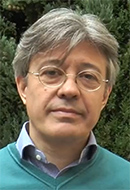 |
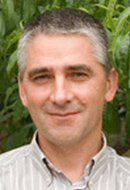 |
| Prof. Gabriele Ferrini UCSC tutor |
Dr. Eduard Fron KU tutor |
Supersonic cluster beam deposition of nanoalloys and bimetallic nanostructures for enhanced oxygen evolution reaction
1 scholarship - Student: Luca Ciambriello
Background and motivation
Hydrogen is considered the best alternative to fossil fuels, and H production with no greenhouse gas emissions can be obtained in photoelectrochemical water splitting, by using materials to dissociate water molecules into H and oxygen exploiting light. The intrinsic slow kinetics of these oxygen evolution reaction (OER) is a major obstacle towards efficient photoelectrochemical cells. Various combinations of metals, oxides and alloys have been investigated as catalysts to improve OER kinetics. Bi-metallic or alloy electrodes are now attracting a great interest as alternatives to the expensive Ru and Ir-based catalysts.
We recently demonstrated that Au0.89Fe0.11 nanoalloys exhibit strongly enhanced OER in comparison to the individual parent-metal nanoparticles (NP). Such a remarkable electrocatalytic activity is associated to nanoalloying. These results open attractive scenarios to the use of kinetically stable nanoalloys for catalysis and energy conversion, in particular if one is able to synthesize NPs with tunable concentration of the composing materials. We are able to deposit NP with controllable size, chemical composition and relative concentration of the constituents directly on the electrodes by supersonic cluster beam deposition (SCBD). Aim of the project is to investigate the relationship between the granular film physical properties and the OER behavior of nanostructured electrodes for different type of bimetallic systems, such as Ag/Fe, Au/Fe, and Ni/Fe-based compounds.
Bimetallic systems will also be studied at ND to exploit localized surface plasmon resonance for a new generation of photo- and electrophotocatalysts, which can combine the excitation of hot-electrons and high selectivity to achieve unprecedented catalytic efficiency. The surface-enhanced vibrational spectroscopy and NP optical properties will provide insightful information on the mechanisms of energy transfer at the nanoscale. New strategies based on Mie-type resonators and dielectric optical nanoantennas will be also utilized to enable real-time monitoring of the reactions under non-invasive conditions.
Supervisors
Prof Luca Gavioli, UCSC, luca.gavioli@unicatt.it
Prof. Ivano Alessandri, UNIBS, ivano.alessandri@unibs.it
Prof. Svetlana Neretina, University of Notre Dame, sneretina@nd.edu
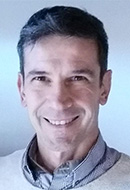 |
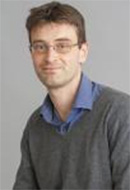 |
 |
| Prof. Luca Gavioli UCSC tutor |
Prof. Ivano Alessandri UNIBS tutor |
Prof. Svetlana Neretina ND tutor |
Advanced spectroscopies of 2D materials and hybrid interfaces for applications in the field of photocatalysis and photovoltaics
1 scholarship - Student: Andrea Casotto
Background and motivation
The project will tackle two novel aspects in the field of 2D materials and related applications. The first focuses on the capability to track the electronic properties of a set of 2D materials both pristine and functionalized when exposed to selected molecules or vapors that may introduce relevant changes of electronic structure, such as doping or band gap opening. The starting material to be considered is graphene, prepared with novel routes to achieve the desired level of doping or functionalization. Additional 2D materials will be selected along the project to match the specific properties required for applications.
In fact all these materials will be used to prepare interfaces suitable for photocatalysis and photovoltaics applications. Consequently, the second novel aspect of the proposed work will be to conduct detailed spectroscopic studies of the interface electronic properties, aimed to gain a control (e.g. chemical gating) on the buried interface by gas absorption at the surface. Photophysics effects will then be explored by state-of-the-art spectroscopies, including time-resolved spectroscopies in the ultra-fast regime aimed to track charge transfer dynamics at the interfaces.
The main goals of the project are:
- Accessing the change of the electronic properties of 2D materials and hybrid interfaces upon absorption of selected molecules
- Tracking the dynamics of charge transfer processes induced by combined surface adsorption and photon irradiation, being these processes at the heart of future applications and device development.
Supervisors
Prof. Luigi Sangaletti, UCSC, luigi.sangaletti@unicatt.it
Prof. Sylwia Ptasinska, University of Notre Dame, sylwia.ptasinska.1@nd.edu
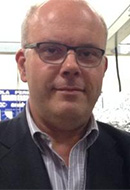 |
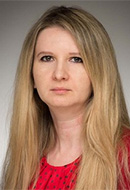 |
| Prof. Luigi Sangaletti UCSC tutor |
Prof. Sylwia Ptasinska ND tutor |
International Doctoral Program in Science
- Ph.D. School
- Open positions
- Research Projects
- Research projects started in 2025
- Research projects started in 2024
- Research projects started in 2023
- Research projects started in 2022
- Research projects started in 2021
- Research projects started in 2020
- Research projects started in 2019
- Research projects started in 2018
- Research projects started in 2017
- Research projects started in 2016
- Publications
- Courses
- Admission
- Faculty
- Alumni and students
